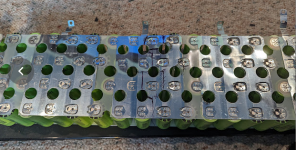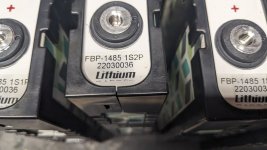Simple answer: It does not

.
Parallel connected batteries are exactly that, connected in parallel with as little resistance as possible. They "keep" each other "balanced". The balancer is balancing the average of the parallel connected cells. It's the reason why I generally do not like parallel connected cells, and if you must, you should use new cells, of the same capacity and from the same production batch. If you cannot guarantee this, the cells need to be measured and closely matched to each other.
For a 4s 2p pack you would have the + and - terminal, and three balancing wires between the cells.


